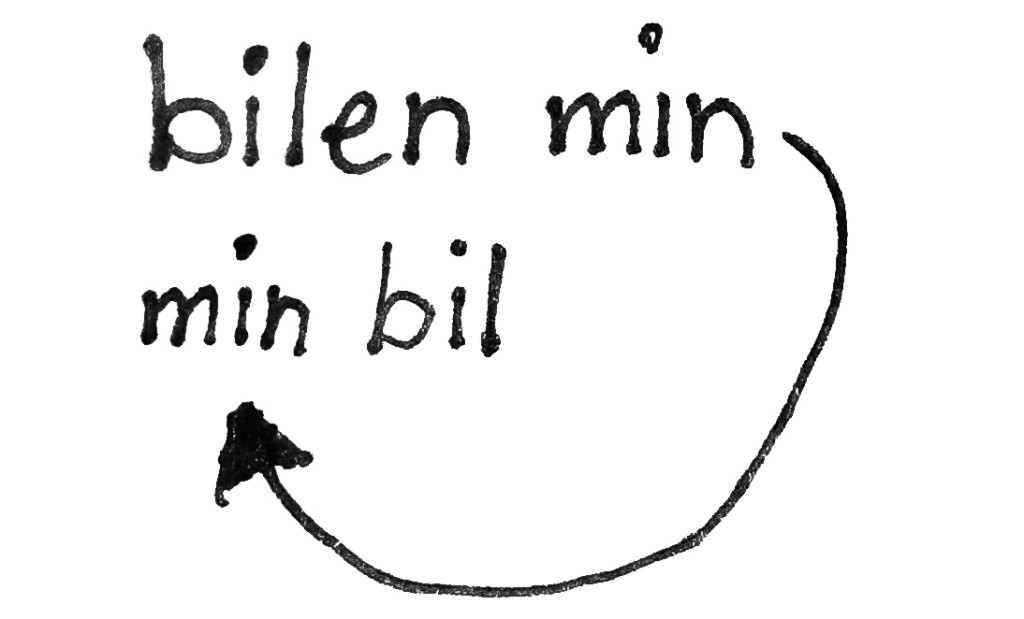«Bilen min» or «min bil»? The placement of the possessive pronoun.
02 Mar 2014
In many languages, there is only one possible way of using possessive pronouns with nouns. In English, for example, they are always placed in front of the noun, as in «my car», «his parents» and «their country».
In Norwegian there are two possibilities. The possessive either follows the noun or precedes it. Thus, you can either say «bilen min», «foreldrene hans» and «landet deres» or «min bil», «hans foreldre» and «deres land». When the possessive follows the noun, the noun is definite («bilen»), and when it precedes the noun, the noun is indefinite («bil»). Fair enough, you might know all of this already. The difficulty arises when deciding which one to use when writing or speaking Norwegian.
In the West Scandinavian languages (Icelandic, Faroese and Norwegian), the possessive pronouns usually followed the noun. In the East Scandinavian languages (Swedish and Danish), however, the possessive pronouns precede the noun. During the union with Denmark which lasted for 500 years and ended in 1814, Danish was the only written language of Norway. Later, two Norwegian written languages evolved, one of which is bokmål (heavily influenced by the Danish written language), and the other one is nynorsk (which was made as to reflect all of the Norwegian dialects). The elite in Oslo wanted to keep bokmål as close to Danish as possible, and still, two hundred years after the union ended, many Danish words are still allowed in bokmål (I will have to write a separate blog post about this..), and the same is true for the sentence structure.
This explains why placing the possessive pronoun in front of the noun in the written language might be considered more formal and less personal by many people.
Placing the possessive pronoun in front of the noun could also be done in order to emphasize the owner of the noun. «Det er hennes bil, ikke hans» (It is her car, not his). «- Er det bilen din? - Nei, det er hans bil» (- Is that your car? - No, it’s his car). The question («Er det bilen din?») does not emphasize the ownership of the car, just the car itself, whereas the answer emphasizes that the owner is someone else. This is especially true in writing, as the tone of the voice cannot help you when you are reading. Still, it is not a hard rule, as the answer to the question might also be «det er bilen hans» emphasizing «hans» while still placing it behind the noun, especially in the spoken language.
In most of the cases, the choice of placement of the possessive pronoun can be said to be a matter of style and formalty when it comes to writing. If you want to sound more Norwegian, more personal and more informal, you should let the possessive pronoun follow the noun. If, however, you want to emphasize the owner of the noun, you want to use the more Danish structure, perhaps making what you write more understandable to a Dane or a Swede, or you want to be less personal and more formal, you could place the possessive in front of the noun.
If you want to speak more fluently and sound more like a Norwegian, remember that when speaking, the possessive almost always follows the noun, except for a few common expressions.
